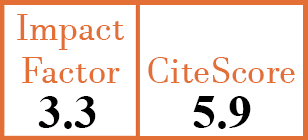Full Papers
Post-COVID-19 psychological condition in systemic lupus erythematosus patients: a prospective observational study
J. Wu1, L. Zhang2, Z. Zhou3, Y. Wu4, Y. Sun5, F. Wang6, J. Teng7, H. Liu8, X. Cheng9, Y. Su10, H. Shi11, Q. Hu12, J. Meng13, H. Chi14, J. Jia15, T. Liu16, M. Wang17, J. Li18, H. Zhong19, C. Yang20, J. Ye21
- Department of Rheumatology and Immunology, Ruijin Hospital, School of Medicine, Shanghai Jiao Tong University, Shanghai, China.
- Department of Nursing, Ruijin Hospital, School of Medicine, Shanghai Jiao Tong University, Shanghai, China.
- Department of Rheumatology and Immunology, Ruijin Hospital, School of Medicine, Shanghai Jiao Tong University, Shanghai, China.
- Department of Nursing, Ruijin Hospital, School of Medicine, Shanghai Jiao Tong University, Shanghai, China.
- Department of Rheumatology and Immunology, Ruijin Hospital, School of Medicine, Shanghai Jiao Tong University, Shanghai, China.
- Department of Rheumatology and Immunology, Ruijin Hospital, School of Medicine, Shanghai Jiao Tong University, Shanghai, China.
- Department of Rheumatology and Immunology, Ruijin Hospital, School of Medicine, Shanghai Jiao Tong University, Shanghai, China.
- Department of Rheumatology and Immunology, Ruijin Hospital, School of Medicine, Shanghai Jiao Tong University, Shanghai, China.
- Department of Rheumatology and Immunology, Ruijin Hospital, School of Medicine, Shanghai Jiao Tong University, Shanghai, China.
- Department of Rheumatology and Immunology, Ruijin Hospital, School of Medicine, Shanghai Jiao Tong University, Shanghai, China.
- Department of Rheumatology and Immunology, Ruijin Hospital, School of Medicine, Shanghai Jiao Tong University, Shanghai, China.
- Department of Rheumatology and Immunology, Ruijin Hospital, School of Medicine, Shanghai Jiao Tong University, Shanghai, China.
- Department of Rheumatology and Immunology, Ruijin Hospital, School of Medicine, Shanghai Jiao Tong University, Shanghai, China.
- Department of Rheumatology and Immunology, Ruijin Hospital, School of Medicine, Shanghai Jiao Tong University, Shanghai, China.
- Department of Rheumatology and Immunology, Ruijin Hospital, School of Medicine, Shanghai Jiao Tong University, Shanghai, China.
- Department of Rheumatology and Immunology, Ruijin Hospital, School of Medicine, Shanghai Jiao Tong University, Shanghai, China.
- Department of Rheumatology and Immunology, Ruijin Hospital, School of Medicine, Shanghai Jiao Tong University, Shanghai, China.
- Clinical Medical Center, Ruijin Hospital, School of Medicine, Shanghai Jiao Tong University, Shanghai, China.
- Department of Obstetrics and Gynaecology, Ruijin Hospital, School of Medicine, Shanghai Jiao Tong University, Shanghai, China. 2757449779@qq.com
- Department of Rheumatology and Immunology, Ruijin Hospital, School of Medicine, Shanghai Jiao Tong University, Shanghai, China. chengdeyang@sina.com
- Department of Rheumatology and Immunology, Ruijin Hospital, School of Medicine, Shanghai Jiao Tong University, Shanghai, China. yjn0912@qq.com
CER18230
2025 Vol.43, N°11
PI 1862, PF 1870
Full Papers
PMID: 40371552 [PubMed]
Received: 13/10/2024
Accepted : 16/04/2025
In Press: 08/05/2025
Published: 11/11/2025
Abstract
OBJECTIVES:
To assess the post-COVID-19 psychological condition of systemic lupus erythematosus (SLE) patients and the internal relationship between psychiatric symptoms.
METHODS:
A total of 619 SLE patients were included in this observational study, with 493 diagnosed with COVID-19 and 126 remaining uninfected. Visual analogue scale (VAS), Multi-dimensional Fatigue Inventory (MFI), Patient Health Questionnaire-9 (PHQ-9), and Pittsburgh Sleep Quality Index (PSQI) were utilised to assess pain, exhaustion, depression, and sleep quality, respectively. Network analysis found the core symptoms and bridge symptoms. Logistic regression was utilised to assess the impact of COVID-19 symptoms on later psychiatric symptoms.
RESULTS:
COVID-19 infected SLE patients had higher levels of pain, ‘General Fatigue’ (GF), PHQ-9, and PSQI ratings compared to others (p=0.006, 0.027, 0.003, and 0.049, respectively). The infected SLE patients’ network of depression, fatigue, and sleep issues identified GF and ‘Feeling down, hopeless’ (PHQ2) as core symptoms with the greatest expected influence of 1.20. The symptoms ‘Trouble sleeping’ (PHQ3), GF and ‘Daytime dysfunction’ (DD) were bridge symptoms with greatest bridge expected influence of 0.72, 0.56 and 0.53, respectively. COVID-19 symptoms such as shortness of breath, weakness, and joint discomfort were linked to post-COVID-19 psychological condition.
CONCLUSIONS:
Our study demonstrated a worse long-term mental status in COVID-19 infected SLE patients. Early screening and specific therapies might help prevent mental issues in SLE patients.



